
As amethyst is 1/3 of the so-called “Golden Triangle” (the other ones being rose and clear quartz), it is one of the most popular crystals in the spiritual community. And for good reason; the stone has wonderful cleansing and relaxing properties.
To ensure that it will continue to do this for you, make sure you cleanse the stone regularly. This gets rid of all the negative energy that the stone has absorbed and leaves you with a stone that is happy to help you. One common way to cleanse your crystals is by using water, and this is fine for amethyst also.
Amethyst can go in water, including saltwater. It is a 7 on the Mohs scale, meaning it is hard enough to prevent damage. Beware that prolonged exposure to water will leave your stone dull and brittle. Safe ways to cleanse your stone are by using selenite, smoke cleansing or sound.
Continue reading if you want to know more about why amethyst is fine in water, as well as the risks and alternative methods of cleansing and recharging. At the bottom of this page you’ll find a quick overview of the amethyst traits, such as element, chakra, zodiac, and benefits.
Want more help or information? If you have any more questions after reading this blog post or want a personal answer for your specific situation, join the free Facebook group! We promise you’ll get an answer from either our team members or a community member.
Also Read: What Chakra Is Amethyst?
Can Amethyst Go In Water? (Explained)
The fact that amethyst scores a 7 on the Mohs scale of hardness means it has a high enough score to prevent surface damage. For those unfamiliar, the Mohs scale provides every mineral with a number from 1-10. The higher the number, the more it can handle. For reference, talc is a 1, whereas diamonds are a 10.
As a general rule, a mineral needs to be at the very least a 5 to be able to withstand water. With amethysts being a 7, it is unlikely that contact with water will immediately cause damage.
However, beware that soaking crystals is often a completely different story. This is caused by the fact that every stone, no matter how polished it looks, has tiny cracks on the surface. These aren’t inherently problematic, but water will easily go into those cracks and expand them. If you soak your stone, the cracks will get larger much quicker and are very likely to eventually break it. This is especially true for raw amethysts or geodes, which have a lot more cracks. The best way to prevent them from breaking is to either only rinse your stones, or to stay away from water altogether.
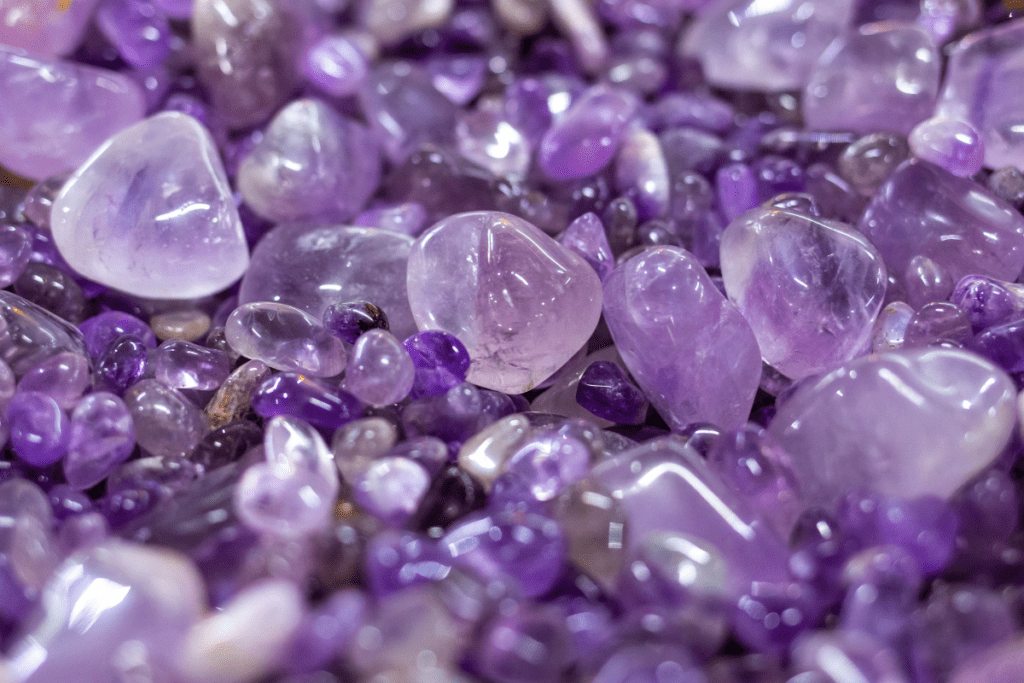

Although some would argue that a broken stone is an unusable one, I believe differently. It is best to decide for yourself if you want to continue to use the stone. Pick it up and check in with it, if it doesn’t feel good it might be better to buy a new one.
Another thing to keep in mind is that any stone that is left in water for extended periods of time will eventually turn dull. This is especially true for polished stones, as they often have a finish over them to make them shinier. When you soak your stone the water eats away at this layer first. This is a good thing, as it protects your stone for a little while longer. The bad news however, is that it will also remove the shine. If you’re using the stone to make crystal elixirs, this is something that is guaranteed to happen. Luckily, it won’t affect its vibrations and you’ll be able to use it just the same. It just won’t be as pretty.
So if you care about the looks of your crystal it might be better to avoid water altogether. This includes amethyst in jewelry – don’t swim or shower with it if you want it to look perfect!
Can Amethyst Go In Tap Water?
I only like to use tap water to cleanse my amethyst (or to make elixirs with) if I know it is clean enough to drink it. If it is not good enough for you, it is not good enough for you stone. After all, you can’t clean something with dirty water.
If your water is not drinkable, you could filter it before using, or get some water from a running stream.
Can Amethyst Go In Salt Water?
Although salt water can be a bit much for most stones, amethyst should be just fine. However on top of the normal risks that come with using water on your crystals, there is even more to think of when using salt water.
The problem with amethyst and salt is not that it will leave indents (like it would with a soft stone like selenite). Amethyst is a rather hard stone and won’t be scratched by a bit of salt. However, issues can occur when the salt is dissolved in water.
- Also Read: “What Element Is Amethyst?“
When dissolved, the salt can get into the tiny cracks of your crystal much easier, and when the water evaporates, the salt will be left behind. If a little is left that won’t be a problem. But if you use this method regularly, the salt can build up and cause the stone to crack.
For this same reason, never leave raw amethyst or geodes in salt water. These stones have more cracks than polished stones, leaving your crystal much more vulnerable.
To avoid this you can rinse your stone under running water when you’re done. It won’t get rid of all the salt, but most of it will be washed away.
Besides, water will cause your stone to turn dull over time and salt will only speed up this process. Again, if you care about the looks of your crystal you’d be better off using a different method to cleanse the stone. If it does turn dull, this won’t affect the positive vibrations from your stone and you can continue to use it the same as before.
Lastly, be aware that silver will get tarnished in salt water. So if you have any piece of jewelry with amethyst and you don’t want the chain to turn black, avoid salt water.
- Also Read: The Complete Guide To Wearing Amethyst
How To Make An Amethyst Water Elixir?
Elixirs are just another great way of working with crystals. Some people like to mediate with their stones, some like to bathe in them, some like to keep them on their body with jewelry and some like to drink water that has been infused with all the goodness. If you haven’t found your way of working with crystals, or are open to try something new, give it a try!
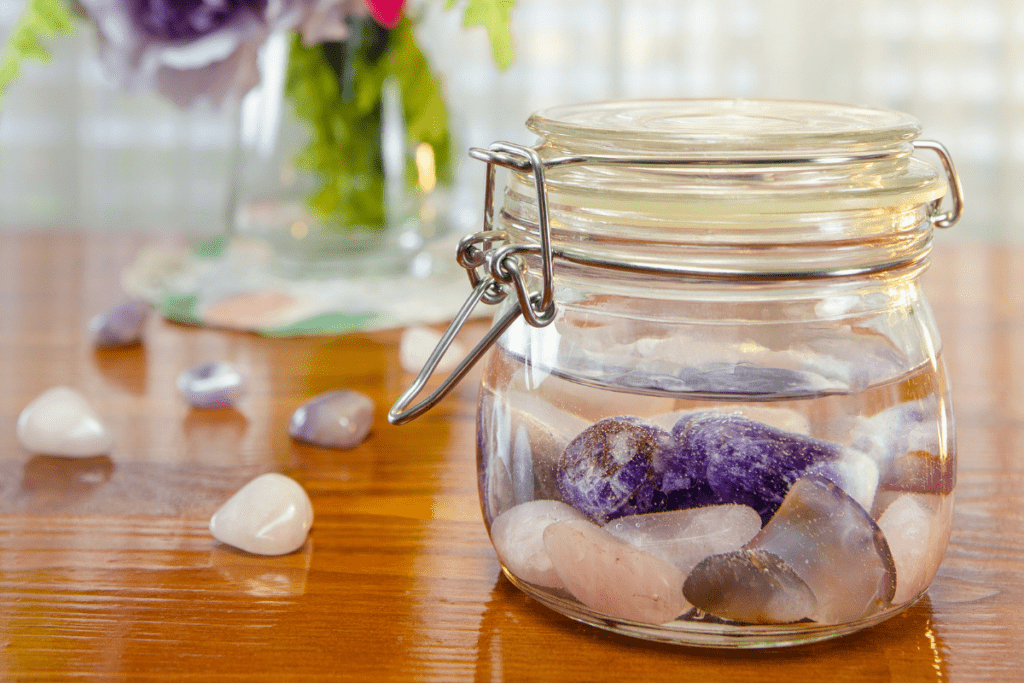
Amethyst elixirs are great for when you feel particularly stressed or anxious, or if you find yourself struggling with decision-making.
To make it, follow the below steps:
- Cleanse your crystal, both physically and energetically. To remove negative vibrations, have a look at some of the ways to cleanse your amethyst in the next paragraph.
- Fill a glass bowl with (drinkable) water. Tap water is fine if this is safe to drink. If not, bottled or filtered water, please!
- Place your amethyst in the water and set your intention. What do you want to get out of this?
- Leave the water in the sun/moon for however long you’d like. Some people leave it for only a few minutes, some leave their water in the moonlight overnight. If you’re leaving it in sunlight, be careful that you don’t leave it too long. Water is a great place for bacteria to grow and the warm rays of sunlight will only speed that up.
- When ready, retrieve the crystal and pour the water into a bottle to place into the fridge.
- If you aren’t going to use all the water within a week or so, fill you bottle with about 1/3 alcohol (like vodka or brandy). Water is a perfect place for bacteria to grow, so be careful.
- Drop a few drops into your water bottle to drink throughout the day.
How To Cleanse Amethyst Using Water
If you’re not too worried about the looks of your crystal, water is a great way to cleanse the stone. Below, I’ll explain how to use both running water and salt water to do this.
Running Water
This is one of the safest ways to cleanse your stone with water as it minimises the contact and thus the risks.
To cleanse the stone, you can just leave it in some running water. If there’s a creek near you where you can leave it for a little bit, this is ideal. If not, in your sink under a running faucet for a few minutes works just fine. Even better is if you visualize the low vibrations being washed away. When ready, dry it with a soft cloth. You’ll be left with a clean crystal, ready to be recharged.
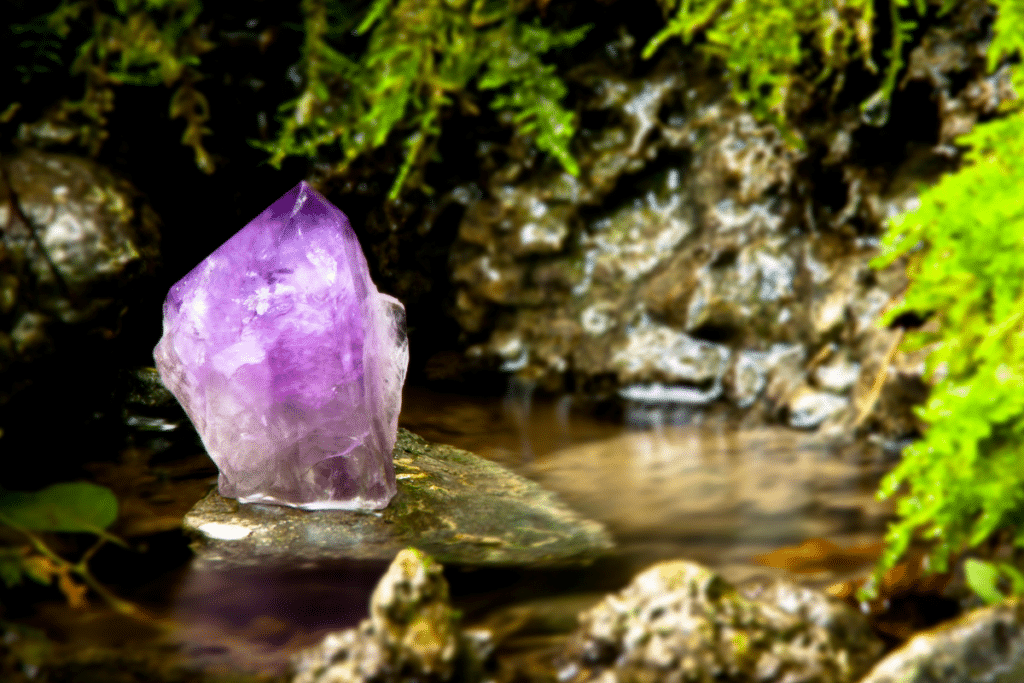
Salt Water
This is a more risky method, but might be nice to use every once in a while if your stone feel especially heavy.
Collect a bowl of fresh seawater (if you can!) or put a tablespoon of salt into a bowl of water. Make sure all the salt has dissolved in the water, and place your amethyst in it. Leave it for a few hours, depending on how energetically heavy it feels.
When ready, take your amethyst out of the bowl and run it under tap water to get rid of any leftover salt. Dry with a soft cloth.
How To Cleanse Amethyst Without Water
If you want to be sure your amethyst will be as shiny and beautiful as it was before cleansing, you might want to avoid water. Some other options are smoke cleansing, sound and selenite. Below, I’ll explain how to use each.
Smoke Cleansing
With smoke cleansing we light herbs and use the smoke to cleanse objects and people. As a result, it is great to use on your crystals as well!
If you do this, make sure you set an intention for your amethyst – what do you want the stone to do for you? When you’re ready you can waft the smoke over your amethyst and repeat your intention out loud. The stone will be done cleansing when you feel like it is. Pick it up and feel it’s energy!
NOTE: Beware that using the term ‘smudging’ and the practice of burning white sage/palo santo is commonly used in the spiritual community. This is a specific type of smoke cleansing used by Native Americans, and which was illegal up until about 40 years ago. We recommend using a form of smoke cleansing that is appropriate for you and your culture.
Sound
Using sound is great if you want to cleanse and recharge at the same time. Perfect if you don’t want to spend hours cleansing and charging your crystals.
For this method, you can use either singing bowls, a tuning fork or a simple YouTube video. To use it, set your intention and let the sound fill the room. Check in with your stone by picking it up. If you feel the energy is light, it’s ready!
I’ll link my favorite video to cleanse my crystals below.
Selenite
Some crystals are so powerful and full of light that they can be used to charge other stones. Selenite is one of those crystals.
I love this method because it is incredibly simple. All you have to do is leave your amethyst on some Selenite.
Selenite plates are ideal, but if you’re just using a stone, make sure it’s bigger than the amethyst that you’re wanting to charge. Leave it for about 24 hours and your stone is ready to be used again.
Be aware that selenite is a very soft stone, so if you’re using raw amethyst or a geode this may leave indents or scratches on your selenite.
How To Charge Amethyst
If you cleansed your stone, it is now ready to charge it. Whereas cleansing gets rid of negative vibrations, charging it fills it with positive ones!
As mentioned above, sound and selenite will cleanse and charge your stone. Another way to charge your amethyst is by using moonlight.
Moonlight
This is my personal favorite way of charging crystals in general, as it is safe for all types of crystals. Place them outside on the day before, during or after a full moon and let them charge for about 7 hours. Leave them directly on the earth as crystals like to be grounded.
If for whatever reason you prefer to keep your stone inside, you can let it charge on the windowsill. The moon won’t be as powerful here, but it’ll be enough to charge the crystal.
Amethyst Overview
Chakra: Crown
Element: Air/water
Zodiac: Aquarius | Pisces | Capricorn | Virgo
Benefits: Anxiety | Protection | Spirituality | Cleansing
Amethyst is beneficial to everyone, but particularly those who are prone to experiencing anxiety or find themselves in stressful situations. It is also a great crystal for when you are meditating, as it helps to open up the crown chakra. Lastly, amethyst helps to create a sense of peace and harmony, which is why many choose to keep it in their living room at all times.
Amethyst makes up 1/3 of the “Golden Triangle” and combined with rose quartz and clear quartz creates a space that is cleansed and free of tension.
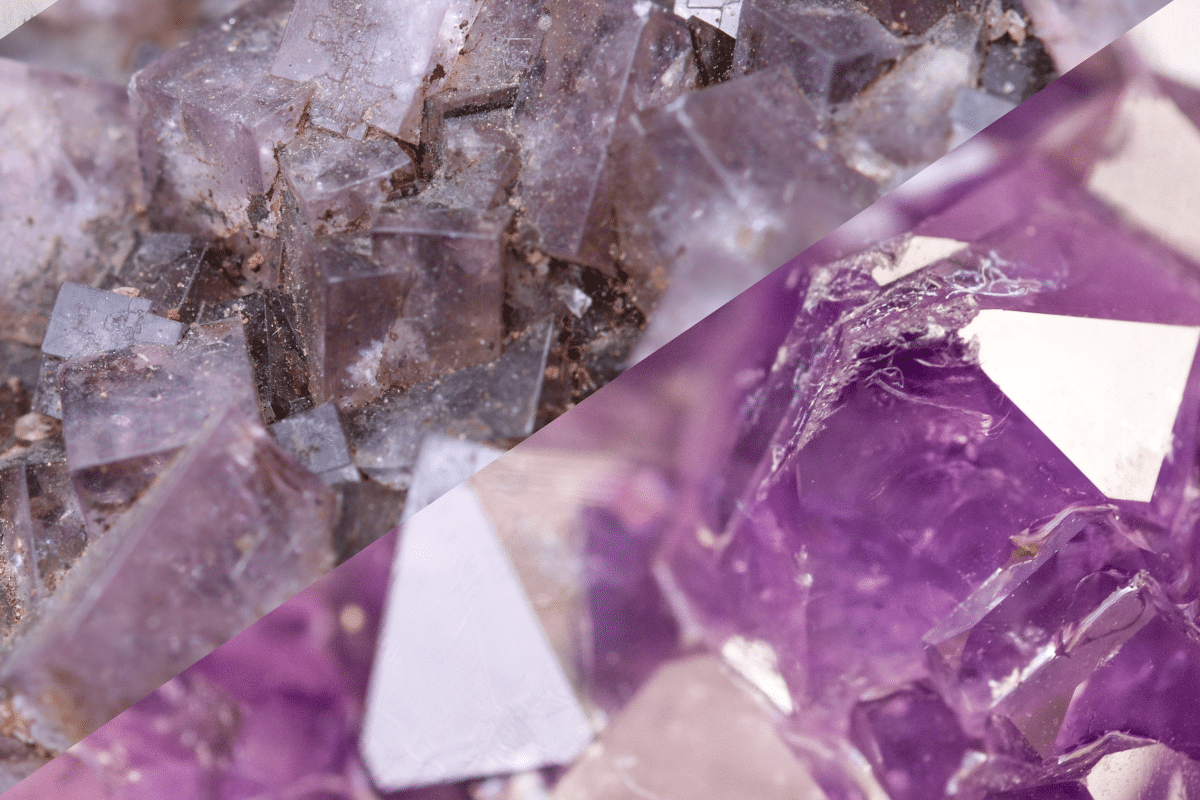
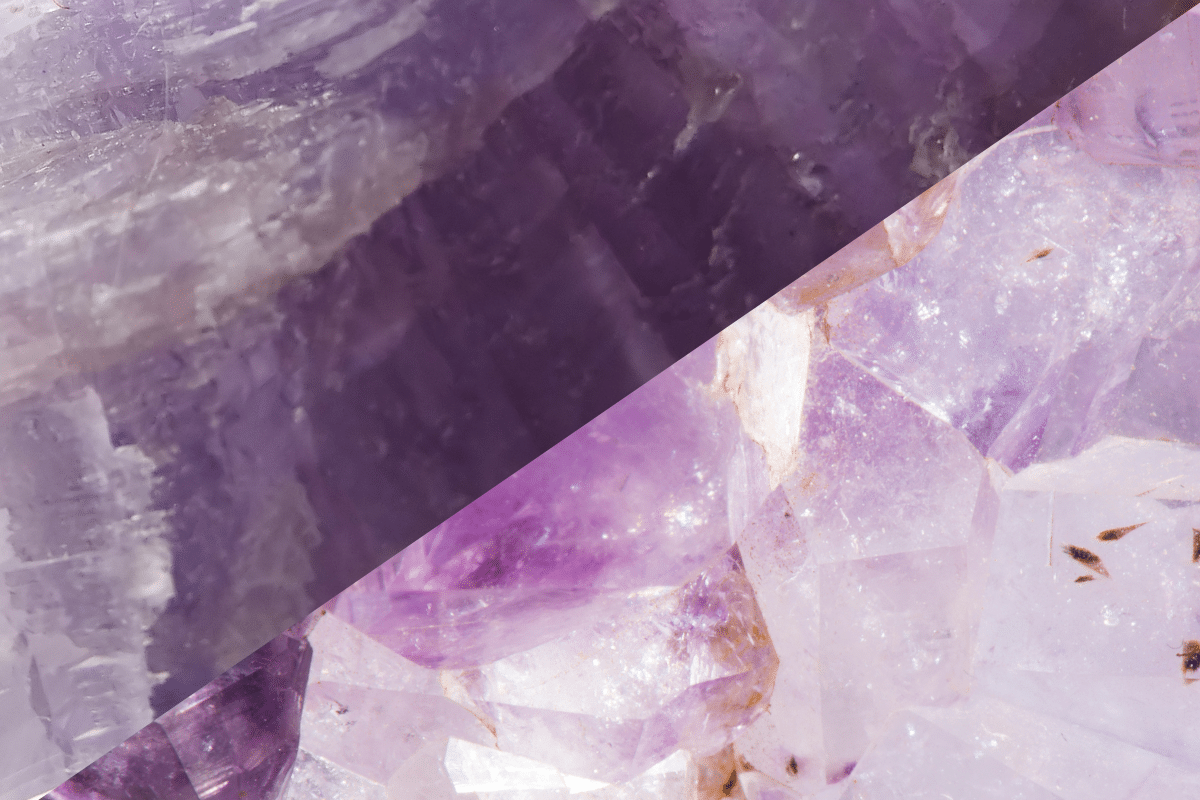





15 Comments